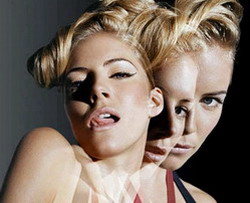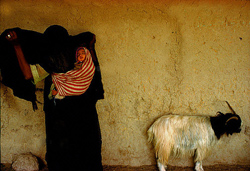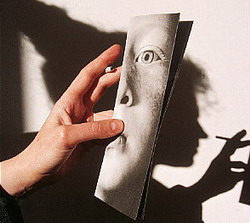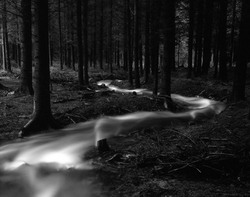|
|
|
|
|
|
|
Photobiennale-2008
|
|
|
March 15 - May 15

 The Moscow House of Photography presents the Seventh International Photography month in Moscow “Photobiennale-2008” which takes place from 15 March to 15 May 2008. Photobiennale-2008 is undoubtedly one of the greatest events in the photography area for two years. Hundreds of fascinating exhibitions of Russian and foreign photographers, tens of interviews and press-conferences, works by the recognized photo classics and “tests of the objectives” by the beginners. In general the festival hosts about 100 exhibitions, and a half of them are foreign. The Moscow House of Photography presents the Seventh International Photography month in Moscow “Photobiennale-2008” which takes place from 15 March to 15 May 2008. Photobiennale-2008 is undoubtedly one of the greatest events in the photography area for two years. Hundreds of fascinating exhibitions of Russian and foreign photographers, tens of interviews and press-conferences, works by the recognized photo classics and “tests of the objectives” by the beginners. In general the festival hosts about 100 exhibitions, and a half of them are foreign.
Three major themes of the festival are “Light and Colour”, “Movement and “Speed”, “Amazement and Delight”. There is enough room for experiments, innovation, alternative and search of the original decisions. The audience is to appreciate time-tested techniques and well-established classics. Personal exhibitions of Ralph Gibson, Guy Le Querrec, Alex Webb, the Lumière brothers, Jacques Henri Lartigue, Georgy Pikhasov will demonstrate excellent schooling “how and what to photograph”. Besides, within the festival the audience may see the exposition of the world-known photo agency Magnum, celebrating its 60th anniversary this year, and traditional FNAC (Fédération Nationale d'Achats pour Cadres) exhibition, dedicated to “Starry sky”.
The real “must-have” for all connoisseurs and lovers of photography is a retrospective of Andreas Gursky’s works. His pictures turn people into grains of sand, whirling in time and space vortex. Andreas’ large-size digital photographs make us see real mass activity: clerks fussing around in the offices, laid out packing bags in a supermarket, fans at the stadium. The audience feels like an ant watching the bird’s eye view of its own little world with the help of powerful lenses.
The exhibitions take place at Manezh Exhibition Hall, Novy Manezh, Central House of Artist, Moscow Museum of Contemporary Art, Zurab Tseriteli Gallery, Schusev State Museum of Architecture, GUM, ArtStrelka, Gallery na Solyanka, Gallery A3, Union of Journalists, WinZavod, Rodchenko International School of Photography and Multimedia, and also at some other Moscow galleries and clubs.
Photobiennale programme:
March 22 – May 11
Rankin. Visually Hungry (UK)
Visually Hungry will document the ubiquitous British creative genius throughout his extraordinary career in which he has shot the many of the world’s leading personalities, models and celebrities. A pioneer and leader in his field, Rankin is famous for his unique style which pushes boundaries with era-defining portraiture, genre-challenging fashion and impossibly erotic nudes. Featuring over 300 images and 20 years worth of work the exhibition will feature images from Rankin’s recent series of exhibitions exhibited during his residency at The Gallery in Central London as well as a whole host of archival work from his extensive back catalogue of names spanning the artistic, cultural and political spectrum. Rankin's personal exhibition takes place at Pobeda Gallery in WinZavod
WinZavod
March 21 –April 21
Ralph Gibson “Parcours” (USA)
Ralph Gibson is an American art photographer best known for his photographic books. His images often incorporate fragments with erotic and mysterious undertones, building narrative meaning through contextualization and surreal juxtaposition. Gibson took up photography while serving in the U.S. Navy (1956-60), studied at the San Francisco Art Institute (1960-62), and later worked as an assistant to Dorothea Lange and Robert Frank. With Frank, Gibson worked on the film Me and My Brother (1967-69) and as cameraman on Conversations in Vermont (1969). That same year he moved to New York City, where he established his personal studio.
Manezh Exhibition Hall
April 11 – May 15
Andreas Gursky (Germany)
Andreas Gursky makes large-scale, colour photographs distinctive for their incisive and critical look at the effect of capitalism and globalisation on contemporary life. Gursky studied under Bernd and Hilla Becher at the Düsseldorf Kunstakademie in the early 1980s and first adopted a style and method closely following Becher’s systematic approach to photography, creating small, black-and-white prints. In the early 1980s, however, he broke from this tradition. Since the 1990s, Gursky has concentrated on sites of commerce and tourism, making work that draws attention to today’s burgeoning high-tech industry and global markets.
Ekaterina Cultural Fund
March 22 – April 27
Harry Gruyaert “Rivages" (Belgium)
 Born in Antwerp, Belgium, Harry Gruyaert knew from a very young age that he wanted to work with images. His strong personal tone had already revealed itself in “TV Shots”, a series of photographs of a television screen shot in a bedroom. This personal vision would later result in editorial assignments from National Geographic, Geo, Fortune, Vogue and ID amongst others. From Belgium to Morocco, passing through India and today Egypt, for more than twenty years, Gruyaert has recorded the subtle chromatic vibrations of Eastern and Western light, giving colour the means to assert its true existence. Since joining Magnum in 1981, Harry Gruyaert has produced a series of books and exhibitions. Born in Antwerp, Belgium, Harry Gruyaert knew from a very young age that he wanted to work with images. His strong personal tone had already revealed itself in “TV Shots”, a series of photographs of a television screen shot in a bedroom. This personal vision would later result in editorial assignments from National Geographic, Geo, Fortune, Vogue and ID amongst others. From Belgium to Morocco, passing through India and today Egypt, for more than twenty years, Gruyaert has recorded the subtle chromatic vibrations of Eastern and Western light, giving colour the means to assert its true existence. Since joining Magnum in 1981, Harry Gruyaert has produced a series of books and exhibitions.
WinZavod
March 22 – April 27
Lise Sarfati "The New Life" (French)
Lise Sarfati obtained a master's degree in Russian studies from the Sorbonne in Paris with a thesis on 1920s Russian photoraphy. She was hired in 1986 as official photographer of the Académie des Beaux-Arts in Paris. She received the Prix Niépce and the Infinity Award from the International Center of Photography (New York) in 1996 in photojournalism for her Russian work, and exhibited at the Centre National de la Photographie in Paris in 1996 and at the Maison Européenne de la Photographie in 2002. Acta Est was her first monograph, published in 2000. In 2003 Sarfati went to the United States and created a series with young characters. This body of work, The New Life (La Vie Nouvelle), published by Twin Palms in 2005, is designed to be viewed sequentially, as episodes in a open-ended drama in which each character represents material for a new subplot following its own surprising path.
WinZavod
March 22 – April 27
Guy Le Querrec « Jazz, de J à ZZ » (France)
Born in 1941 into a modest family from Brittany, Guy Le Querrec shot his first pictures of jazz musicians in London in the late 1950s, making his professional debut in 1967. Le Querrec joined Magnum in 1976. In the late 1970s he co-directed two films, and in 1980 directed the first photo-graphic workshop organized by the City of Paris. During the Rencontres d'Arles in 1983 he created a new form of show by projecting photographs alongside a live quartet of jazz musicians, repeating the experiment in 1993 and 2006. Le Querrec has undertaken numerous reportages on the Concert Mayol in Paris, subjects in China and Africa, and North American Indians. He punctuates his work with breaks devoted to jazz (festivals, clubs and tours), and has traveled through twenty-five African countries with the Romano-Sclavis-Texier trio.
WinZavod
March 22 – April 27
Gueorgui Pinkhassov "Like Light” (Russia)
 Gueorgui Pinkhassov is a former Mosfilm cameraman and now the only Russian photographer, admitted to Magnum. He started in 1970, taking pictures of the Moscow streets. That was not completely safe, so Gueorgui pretended to sell his camera at the flea markets and in fact he made pictures. Accidental photos became the essence of his life. Snap shots, made on the run, may turn out to be a murder scene being possible to notice only after development or a shot in Fellini style. Dynamic shots being very spontaneous are indeed entirely complicated, deep and multidisciplinary. Gueorgui Pinkhassov is a former Mosfilm cameraman and now the only Russian photographer, admitted to Magnum. He started in 1970, taking pictures of the Moscow streets. That was not completely safe, so Gueorgui pretended to sell his camera at the flea markets and in fact he made pictures. Accidental photos became the essence of his life. Snap shots, made on the run, may turn out to be a murder scene being possible to notice only after development or a shot in Fellini style. Dynamic shots being very spontaneous are indeed entirely complicated, deep and multidisciplinary.
WinZavod
March 22 – April 27
Alex Webb “Colour: The Suffering of Light” (USA)
Alex Webb was born in San Francisco 5 of May 1952. He studied history and literature at Harvard University and began working as a professional photojournalist in 1974. He joined Magnum Photos as an associate member in 1976, becoming a full member in 1979. Webb has photographed extensively in the United States, the Caribbean, Latin America, Africa, and most recently in Istanbul. His photographs have appeared in such publications as New York Times magazine, Life, Geo, Stern, and National Geographic. Alex Webb is classified alternately as a street photographer, photojournalist, and fine art photographer, but he claims “to me it all is photography. You have to go out and explore the world with a camera. Whatever category it falls into – it falls into.”
WinZavod
April 04 – April 21
Autochromes Lumière (France)
One of the most delicate, in all aspects of the word, photographical techniques is the Autochrome. These early 20th century color photographs, invented by the Lumière brothers, (Auguste and Louis) show images with a 'pointillistic' effect. The Lumière's contribution to color photography is perhaps of more importance in comparison to their contribution in film history, since in the period (1895) they "invented" cinema, projected moving images where since long in existence! Autochromes were not the first photographs in color since the search for color started at the dawn of photography and is seen in most early techniques true coloring by hand. e.g. Daguerreotypes, Ambrotypes, Chrystoleums, etc. However, the autochrome was the first practical technique that produced color without the artificial aid of an artist.
Novy Manege
March 21 - April 23
 Bogdan Konopka "De Natura Rerum" (Poland) Bogdan Konopka "De Natura Rerum" (Poland)
The exhibition "De Natura Rerum" of a Polish photographer Bogdan Konopka includes two series, both questioning the intimate relation between man and nature. Bogdan Konopka was born in Poland (1953). He lives and works in France. By extending the exposure time while photographing fluid elements, Bogdan Konopka makes use of his camera the same way an alchemist would, when dealing with the transmutation of material. This allows him to highlight the illusion of the visual perception: what do we see? No artificial effect in the trees series: the photographer simply steps aside. Understanding that the metamorphosis occurs by itself, Konopka registers the tormented shapes of these mutant monsters and invites us to share Lucrece's say: "The eyes do not have the power to understand the nature of things: you should therefore not blame the sight for the mistakes of the mind".
Manezh Exhibition Hall
March 21 - April 23
Mario Giacomelli "Photographies. 1953 - 1990" (Italy)
A self-taught photographer, Mr. Giacomelli had a poet's eye for the startlingly abstract order man can impose on nature and a poet's understanding of the great disorder that is the human condition. Among his memorable images is one sometimes known as ''The Scanno Boy,'' part of the 1957-59 series of pictures that Mr. Giacomelli took in Scanno, an impoverished town in the Abruzzi region of central Italy. Framed by elderly women in black, the boy is set apart by what John Szarkowski, former director of the department of photography at the Museum of Modern Art, has described as ''the halo of the worn footpath.'' With all the faces blurred except for the boy's, the picture is dreamlike and in its stark dichotomy - youth surrounded by old age - could almost be a reprise of the artist's boyhood. Mr. Giacomelli's overhead views of mystifyingly abstract, horizonless landscapes, which he took from the time he snapped his first pictures, in late 1952, through the 1990's, place him in the company of photographers like William Garnett and Minor White. Mr. Giacomelli's 1970's images of geometric patterns in Senigallia's fields bear striking parallels to Aaron Siskind's contemporaneous photographs of wall abstractions. In 2000, Mario Giacomelli died at the age of 75.
Manezh Exhibition Hall
More information on Photobiennale-2008
|
|
|
|
|